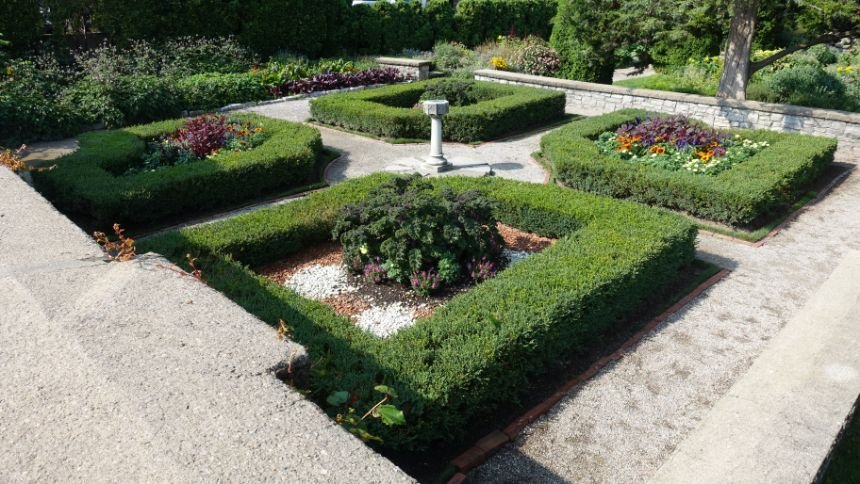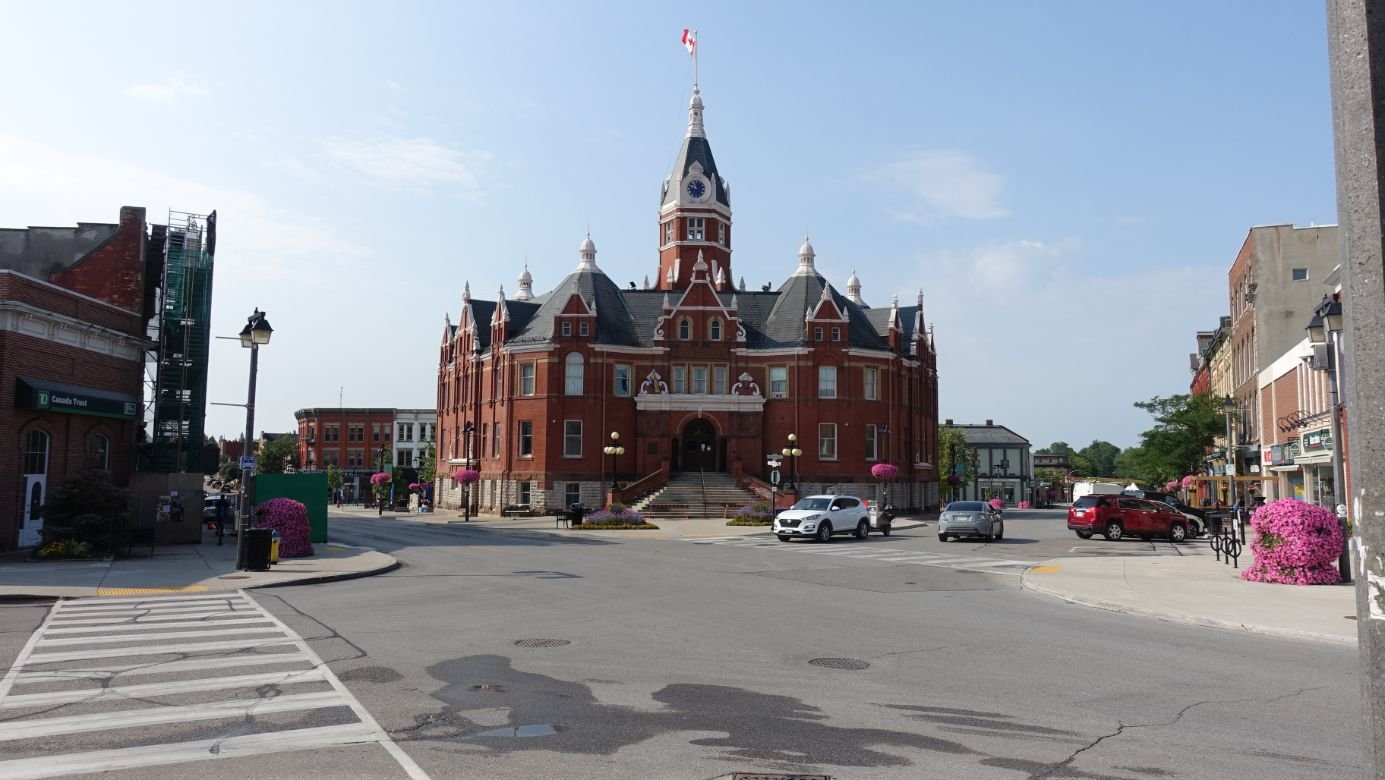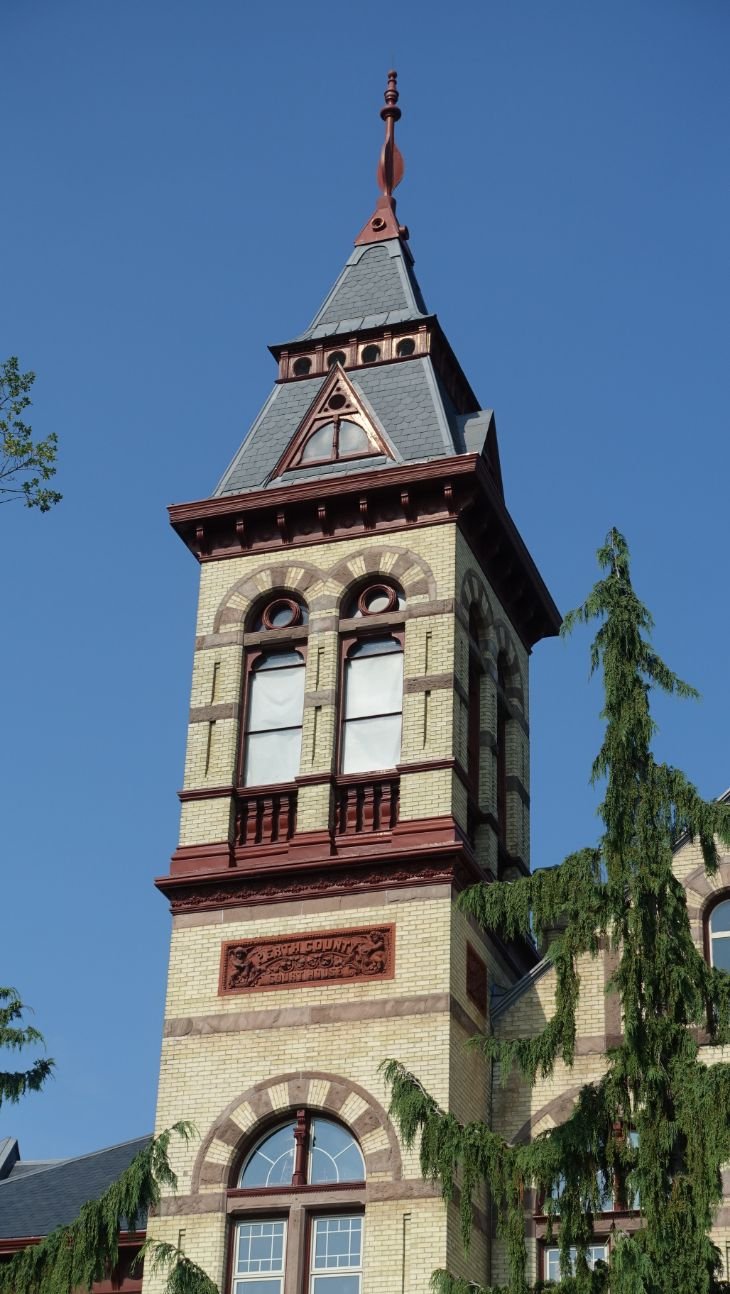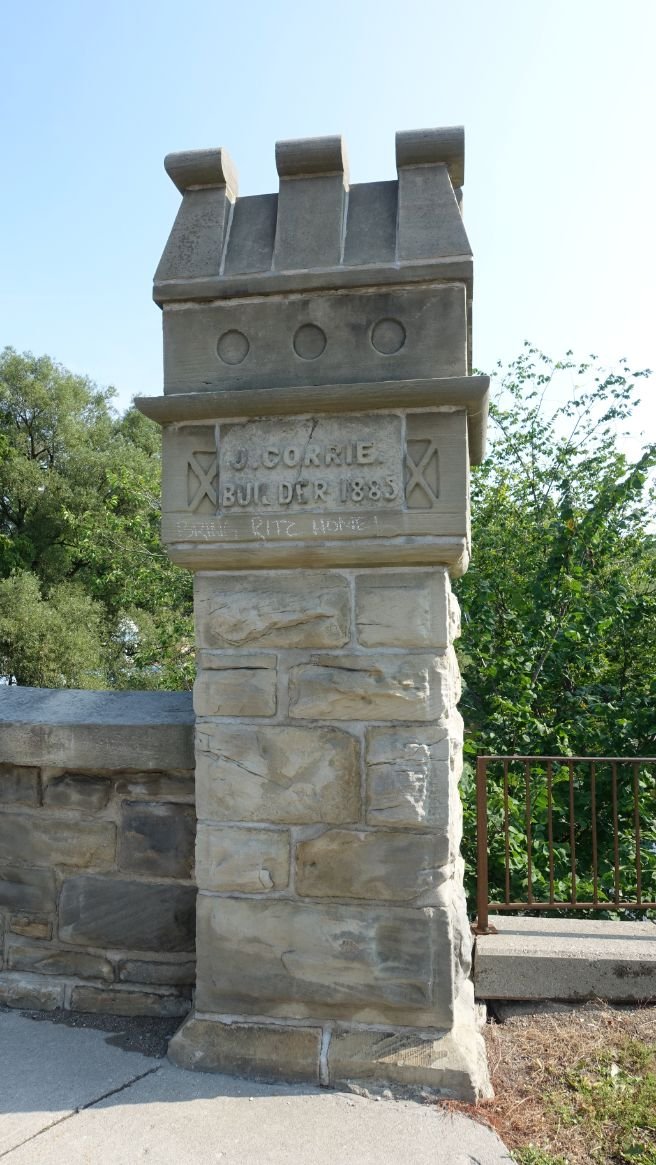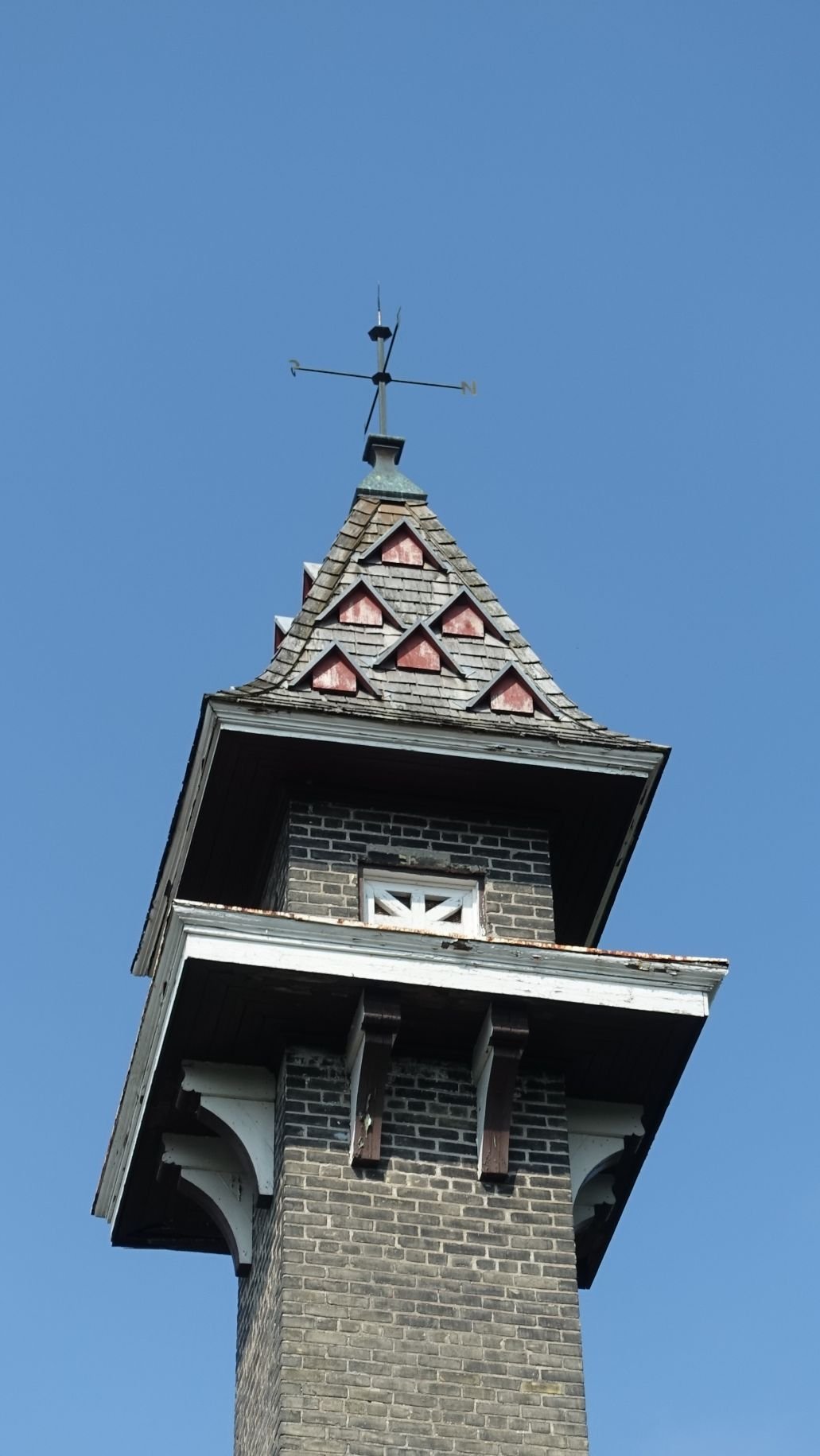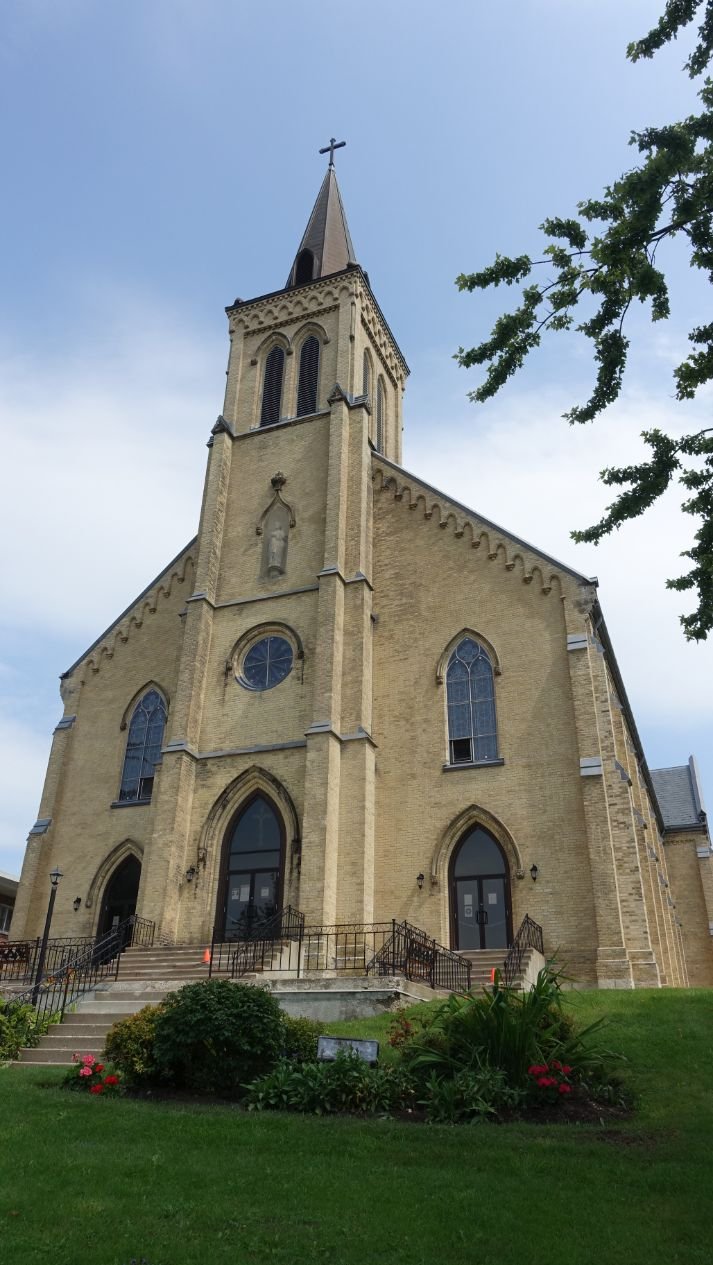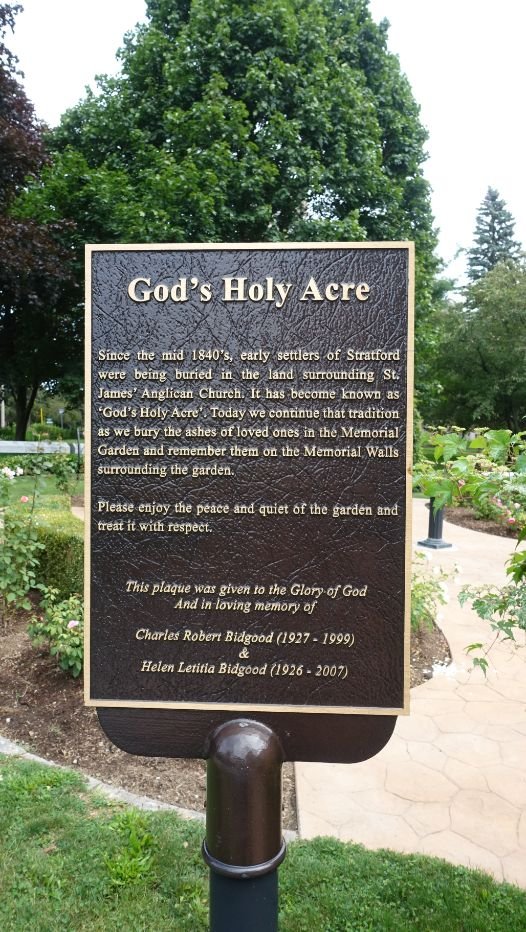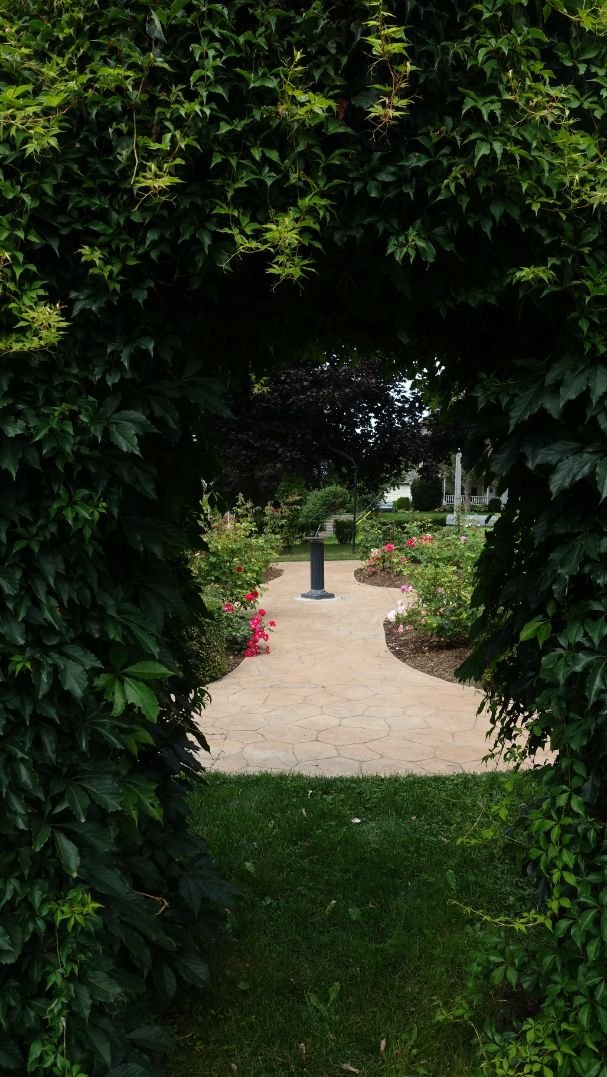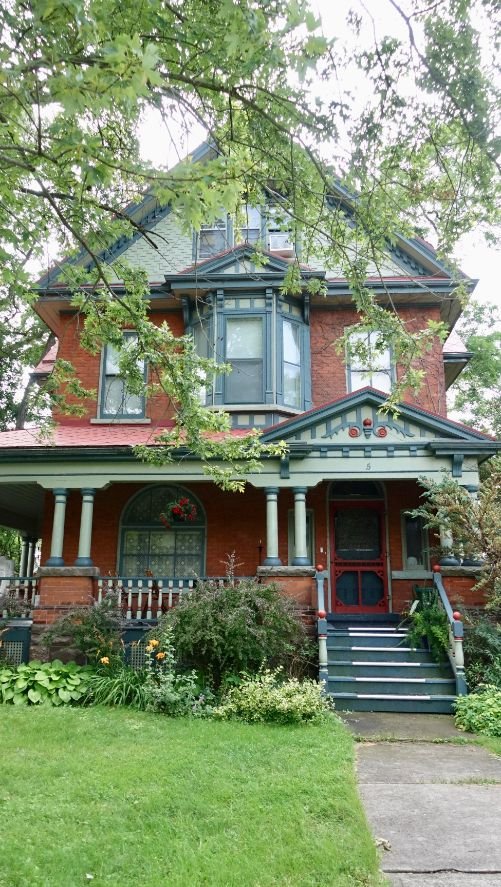Stratford, Ontario: Downtown / Gardens / Churches / Butter Tarts / History
This is the last in a 3- part series of day trips I took while visiting my Mom in London, Ontario (others were to Chatham and St. Marys) this past summer. One of the common denominators of the three trips was that each city/town had a charming historic downtown – complete with a pedestrian-friendly main street and river flowing through its downtown used to create a popular park.
In some ways, they are not that different from Calgary, with its historic Stephen Avenue in downtown and Atlantic Avenue in Inglewood (its two historic main streets). And Calgary’s Bow River pathway that includes Shaw Millennium, West Eau Claire and Sien Lok Parks, as well as St. Patrick’s Island, St. Georges (Calgary Zoo) parks.
Every downtown needs a summer garden as a place to sit, relax and ponder.
Every city or town must adapt to ever-changing economic realities (more later).
Pedestrian-Friendly City
For my Mom and I, it wasn’t Stratford’s unique theatre culture that attracted us to visit but rather the pedestrian friendliness of the city and its downtown. We both love to wander cities and towns enjoying the architecture, shop windows, parks, murals, public art, gardens and people. (Backstory: Our best trip was to Mexico City, where even after wandering the streets for 18 days, we didn’t want to leave.)
Downtown Stratford benefits from being an international tourist destination (more on this later), and as such, supports a diversity of cafes, restaurants, brew pubs, art galleries and speciality shops you wouldn’t normally find in a city of 30,000+ people. It also benefits from having Lake Victoria on the northern edge of its downtown, famous for its white swans and pedal boats. The Shakespeare Gardens on the western edge of the downtown are beautiful in the summer. And, it is home to dozens of heritage buildings that create a charming main street for strolling.
Downtown Stratford is a walker’s paradise with lots of shops and historic architecture.
Duelling Church Bells
Always ones to wander off-the-beaten path we saw a church spire on a hill outside downtown and decided to check it out. Turns out there were two large churches – Saint Joseph’s Catholic Church and St. James Anglican Church - almost side by side. And surrounding them were dozens of heritage homes. A perfect place to wander – which we did. While I was exploring St. James and its garden I was treated to the duelling noon-hour bells of the two churches. Gotta love serendipity.
Best Butter Tarts
After three hours of walking we were getting hungry. A quick check on Google Maps identified Madelyn’s Diner nearby ( with a 4.5 star rating), so off we went.
Madelyn's Diner was established in October 1985, by Madelyn and Rob McGorman, along with their children Krista and Andy.
Its first location was located down the street from where it is today, at 422 Huron Street and “Across The Street From THE BEER STORE” became their slogan. In 1989, having outgrown this location, they moved to 377 Huron Street, and their slogan became "Right Down The Street From THE BEER STORE". (from website)
Today, Madelyn’s is best known for its “EVER FAMOUS BUTTER TARTS.” We tried them and not only are they perhaps the best in Canada, they may also be the biggest - the size of my fist. We each had one after our tasty lunch - and took home a box of four for later.
With great food and friendly service, it definitely deserves a 4.5 star rating.
Link: Madelyns Diner
Stratford History
Stratford, Ontario is a perfect example of how early Canadian settlers created cities and towns with names that reminded them of their homeland in Europe. In this case, it references was Stratford-upon-Avon in England, a theatre town not only world famous for being the birthplace and gravesite of playwright William Shakespeare, as well as being home to the world famous Royal Shakespeare Company which resides in its Royal Shakespeare Theatre.
Stratford Ontario is also a world famous as a theatre town in its own right. It is home to Canada’s famous Stratford Festival and North America’s largest classical theatre company. And its river is also called Avon.
Stratford is an example of how cities and towns have to re-invent themselves as economies change. When the railway industry pulled out of Stratford in the early 1950s, the late local journalist, Tom Patterson (1920 to 2005) had an idea for breathing new life into his native city’s economy - a festival of Shakespearean theatre.
In January 22, 1952, City Council gave him a grant of $125 to seek artistic advice in New York. Unfortunately, he failed to connect with Laurence Olivier, his intended target there.
However, Canadian theatre pioneer Dora Mavor Moore subsequently put him in touch with legendary British director, Tyrone Guthrie. Intrigued by a transatlantic telephone call, Guthrie visited Stratford to see if Patterson’s idea might be viable. He ended up becoming our first Artistic Director. And as they say, the rest is history.
Link: History of Stratford Festival
Last Word
Stratford, Ontario is a great example of how cities and towns must evolve and differentiate themselves by creating a unique sense of place, if they want to continue to be attractive and viable places to live, work and play. It is also a good example of how cities can link the preservation of the past with the prosperity of the present.
Not every city and town is so lucky to make the successful transition from one economy to another. Closer to home (for me) Calgary - especially its downtown - is in the middle of attempting to transform from an” office tower, corporate oil & gas head office” economy, to one that is focused on being an “incubator for a diversity of small entrepreneurial start-ups,” which grow to become larger enterprises.
Only time will tell if it can be successful.
If you like this blog, you will like these links:
Postcards: Southern Ontario’s Yellow Brick Road





